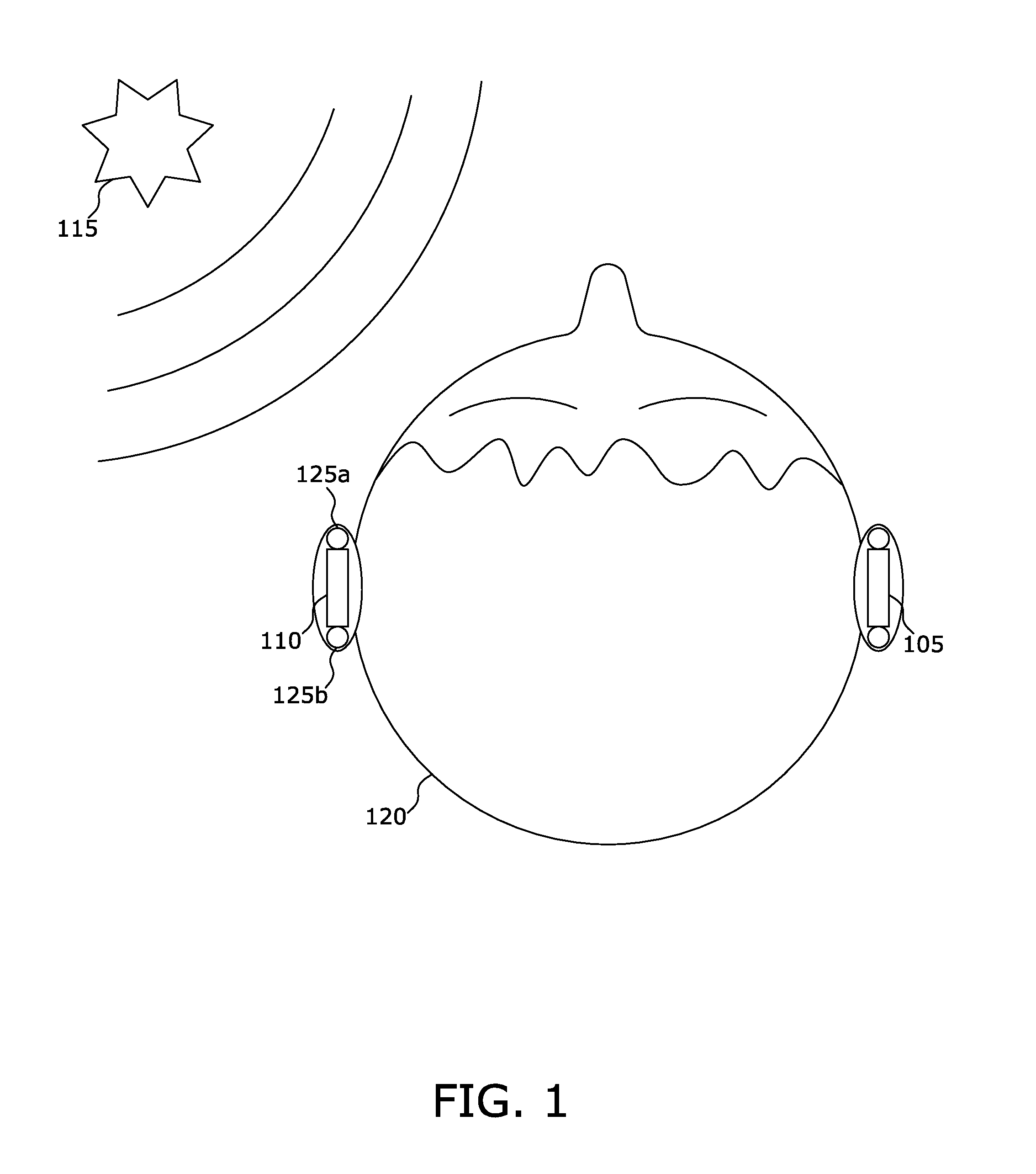Method and Apparatus for Implementing Hearing Aid with Array of Processors
a processor and array technology, applied in the field of hearing aids, can solve the problems of high cost, high cost, and high cost of digital signal processors, and achieve the effects of compact form, reduced power consumption, and greater flexibility for users
- Summary
- Abstract
- Description
- Claims
- Application Information
AI Technical Summary
Benefits of technology
Problems solved by technology
Method used
Image
Examples
Embodiment Construction
[0035]FIG. 1 is a plan view of the physical components of an embodiment of the invention in a working environment. The array hearing aid system includes a right earpiece 105, a left earpiece 110, and a user interface device 115. Each earpiece is substantially similar to the other and includes a front microphone 125a and a rear microphone 125b according to this embodiment. In alternate embodiments, a plurality of microphones greater than two may be included in the earpiece. The system reproduces processed sound to the cochlea of the inner ear which amplifies and attenuates the particular frequencies where a user 120 suffers hearing loss. An interface device 115 permits the user 120 to customize the hearing aid system to fit the particular needs of the individual user's 120 hearing loss profile or the user's 120 listening environment.
[0036]FIG. 1a is a side elevation view of the physical components of an alternate to the FIG. 1 embodiment. An over the ear, earpiece 110 is shown connec...
PUM
 Login to View More
Login to View More Abstract
Description
Claims
Application Information
 Login to View More
Login to View More - R&D
- Intellectual Property
- Life Sciences
- Materials
- Tech Scout
- Unparalleled Data Quality
- Higher Quality Content
- 60% Fewer Hallucinations
Browse by: Latest US Patents, China's latest patents, Technical Efficacy Thesaurus, Application Domain, Technology Topic, Popular Technical Reports.
© 2025 PatSnap. All rights reserved.Legal|Privacy policy|Modern Slavery Act Transparency Statement|Sitemap|About US| Contact US: help@patsnap.com



